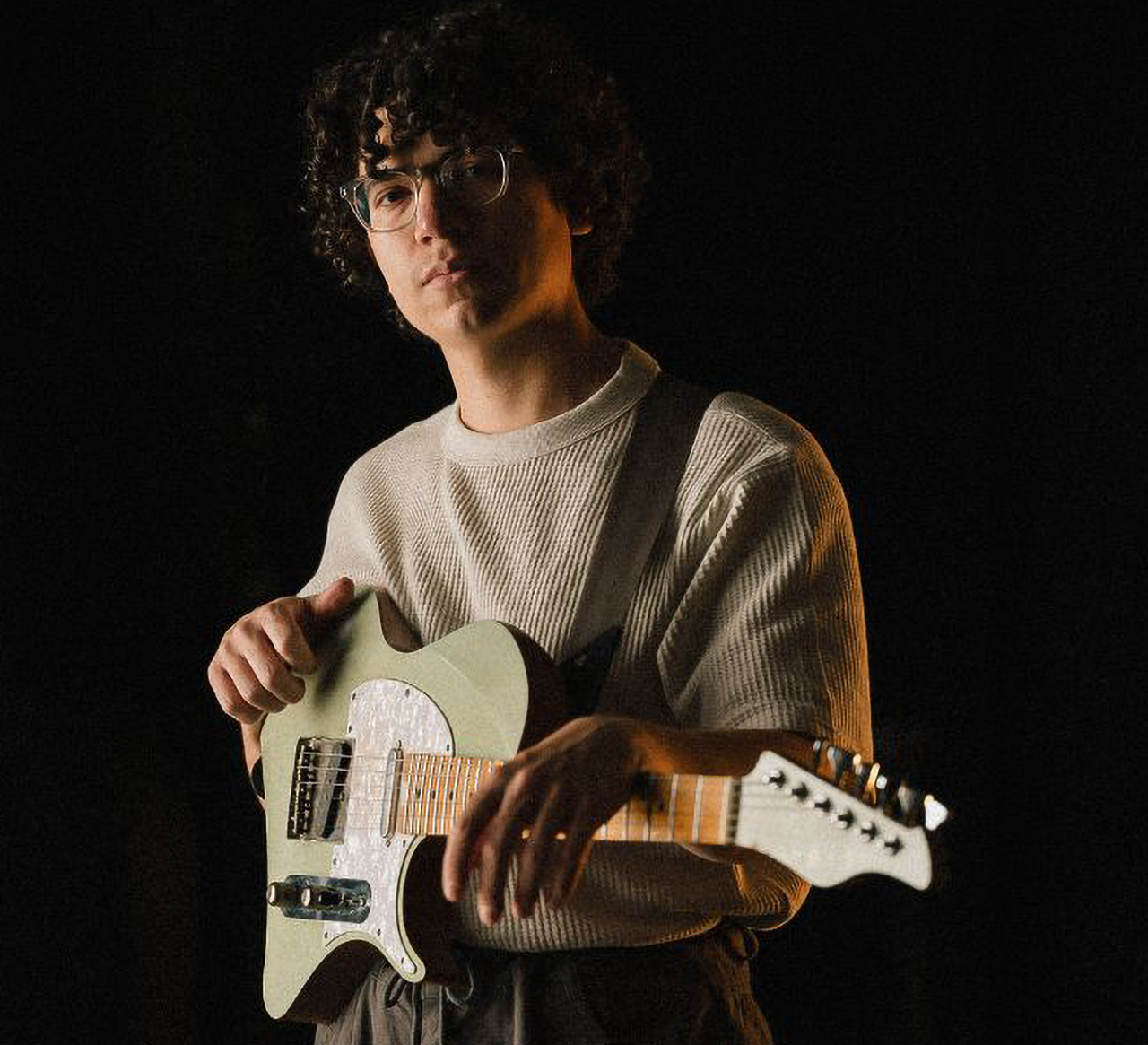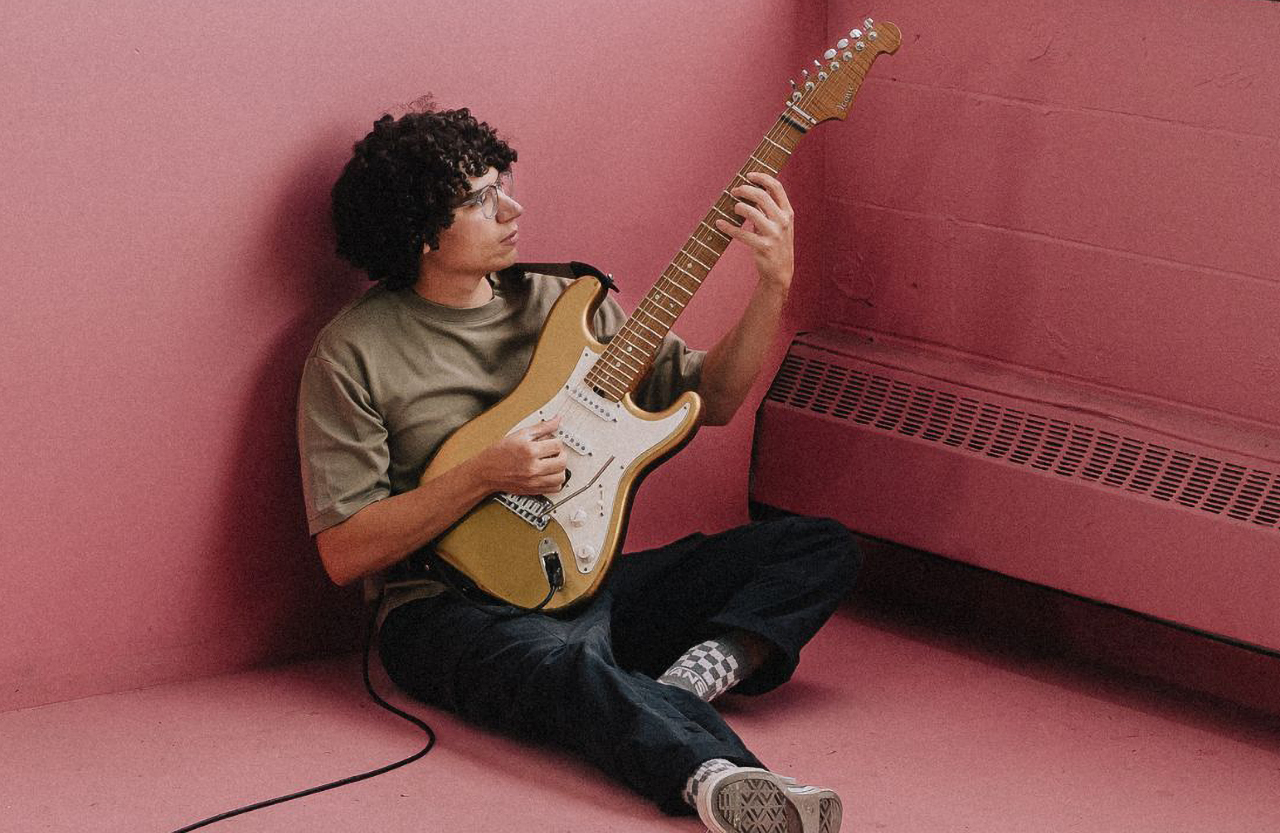
Joshua De La Victoria isn’t like most other prog guitarists. His feet may be planted on the borderline where math rock meets fusion’s colorgasm spectrum, but it’s his classic rock upbringing – via his parents’ love for Tom Petty and Bon Jovi – that shaped his tastes.
“Tonally, I love the classic rock stuff,” De La Victoria says. “Especially edge-of-breakup tones like a Vox AC30 kind of thing, or any kind of Friedmann amp that isn’t super metal.”
That’s why you’ll find him playing through crystalline low-gain tones instead of cranking the distortion.
“The crazy story is that I didn't get into prog until after I played with Matt Garstka in a covers band. He was already in Animals As Leaders – but there we were, playing the Beatles in a bar. He’d do a drum fill and I’d be like, ‘What the hell is happening?’ He opened my eyes to complex rhythmic ideas.”
The pair soon formed their duo, Victoria, in which the Californian guitarist provides Garstka’s crazy rhythmic conceptions with a tasteful harmonic accoutrement.
“It’s tricky turning rhythmic concepts into songs,” says Victoria, who continues on the side with his “more traditional” modern rock outfit, Portraits.
“I’m very intentionally trying to make complex music something that I would listen to. My favorite band is The 1975, which is as poppy as you can get, and that’s the place I’m coming at these songs from.
“When I have something that's rhythmically complex, that tells me that it shouldn't be harmonically overwhelming. A lot of the creativity comes from chord voicings, and then the production of the music. I try to make everything intentional rather than complex just for the sake of it.”
He adds: “I’m a big fan of hidden complexity. With Chronostasis, the whole song is built around two polyrhythms that are bouncing off of each other – but my goal is that you don't notice that until you choose to dive in deeper.”
Garstka plays a quarter-note pattern of 3-2-2-3, while Victoria plays a pattern of 4-3-3-4. “So it sounds like I’m playing fast and slowing down,” the guitarist says. “And then on top of that, I put all these moody chords.

“I’m always thinking, ‘Where can I take this rhythm to, conceptually?’ I ended up out the time with the polyrhythm, playing the middle section in straight seven, so it was no longer pushing and pulling.”
Providing the humanity to contrast Gartska’s machine-like drumming has led to an interesting method of building chords.
“I see chords as intervals; I see their relationship with the first of the scale. So if I’m playing in A major, I have the root note; and I’ll pick other notes in the scale to make a new chord shape I’ve never played before, so maybe I-V-VI-XI.
I never used the bridge on a Strat; it was way too bright… getting a humbucker opened up all these different tones
”Then I’ll use voice-leading to change by moving the least amount of notes possible. I don’t like to use memorized shapes in writing mode.”
Victoria’s guitar collection is ever-growing, but you’ll never see two of the same guitar on on his wall.
“I know that there are people that want the same guitar over and over, or they like a certain neck so they want it on everything. But I’d rather just play that one guitar. I intentionally spec each guitar differently.”
That, he explains, is how he unlocks different ways of playing from within him.
His main instrument is a Solana Vintage Modern, a Strat-style model from California’s Iconic Guitars. Its body shape, scale length and sound is where he finds himself “at home” – although a notable departure from the Fender template comes via its bridge humbucker.
“For the first 10 years of playing I was a single-coil guy, but I never used the bridge on a Strat; it was way too bright,” he reveals. “I would nearly always play the neck. Getting a humbucker opened up all these different tones and made the Strat more versatile for me.”
An Iconic Tamarack is his preferred Tele-style model, while an Abasi Space-T provides a contemporary twist. The Tamarack’s bright and strong single coils and quick attack mean he often finds himself playing “16th note staccato patterns” on the guitar more than anything else.
Victoria calls his eight-string, Fishman Fluence-loaded Abasi Larada Legion a “futuristic machine,” feeling that it excels for both “ultra-clean chordal sounds” and “ultra-modern high-gain” tones.

His latest addition, a light Iconic Carlsbad Vintage Modern, is his first fully-customized build, designed to channel the warmth of semi-hollow Gibsons.
“The neck is way thicker than the neck on my Stratocaster, so I find playing with my thumb behind the neck is more comfortable,” he says.
“The noiseless Seymour Duncan P-90s sound completely different to my Abasi. All pickups react to your playing and your amps in completely different ways. If I pick hard with the vintage pickups, they compress in a completely different way than the Fishmans, so I play differently as a result.
Rhythm parts on the Carlsbad can be quite muddy, whereas on the Space-T they’re really clear and precise
“The Carlsbad is much darker, for instance, than my Abasi Space-T, which is extremely bright and almost like a cartoonish version of what a Telecaster sounds like. Rhythm parts on the Carlsbad can be quite muddy, whereas on the Space-T they’re really clear and precise, so I’m always thinking about using different guitars for different parts of my songs.”
The duo plan to release new Victoria music throughout this year. Victoria himself tours during the summer as part of EDM prog jazz outfit Sungazer, while Garstka is on the road with Animals As Leaders.
- Find out more at Victoria’s website.







